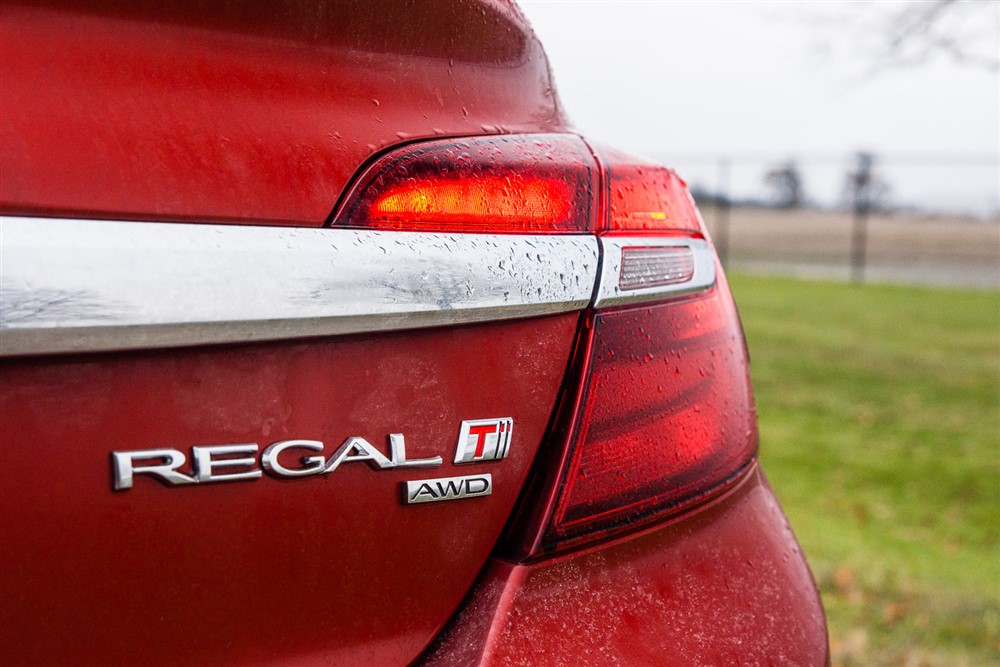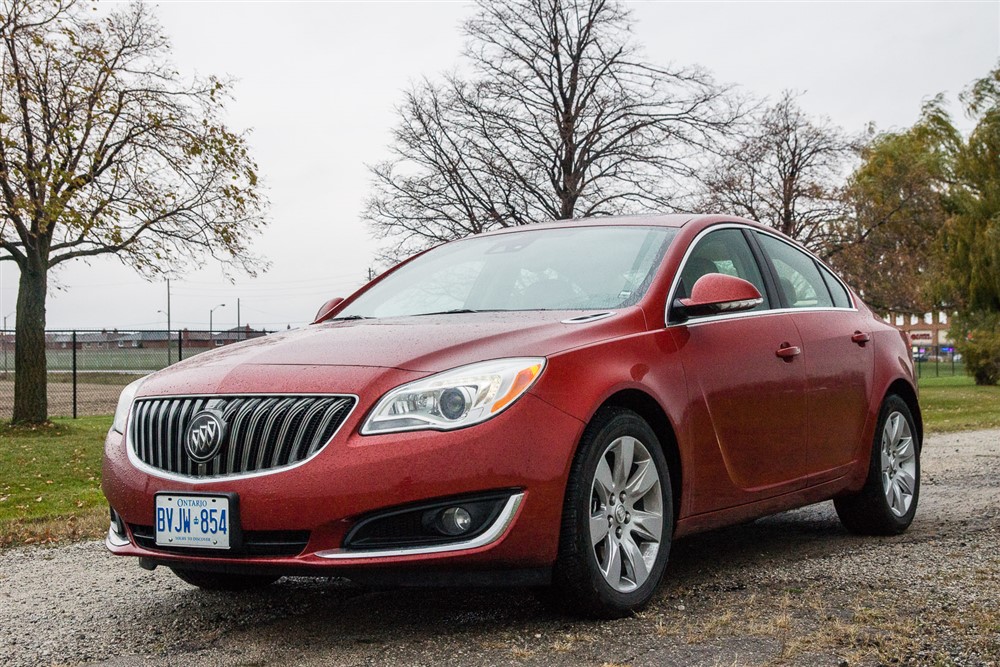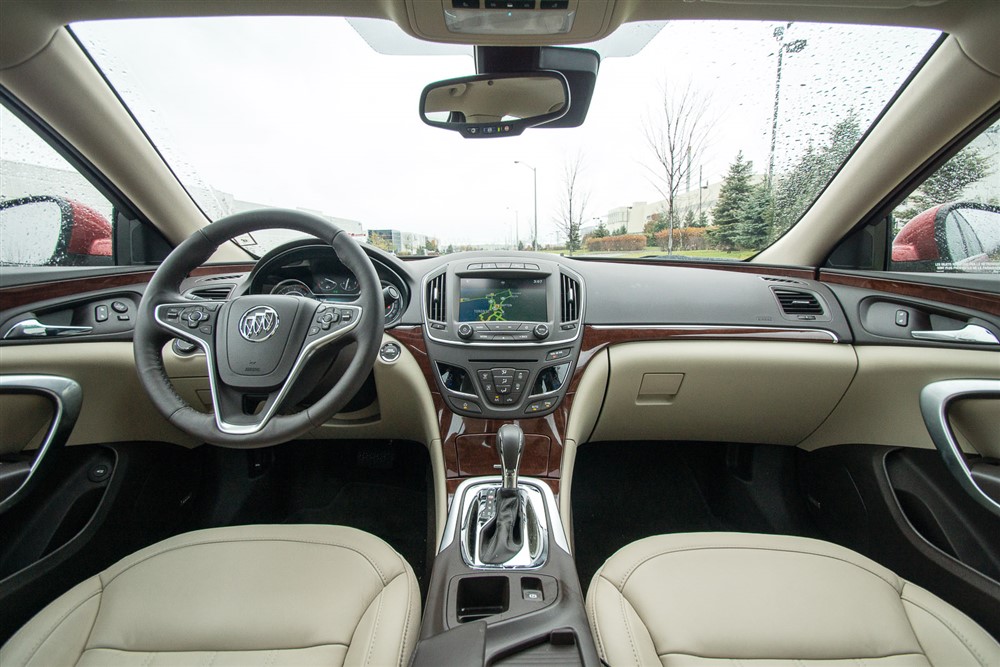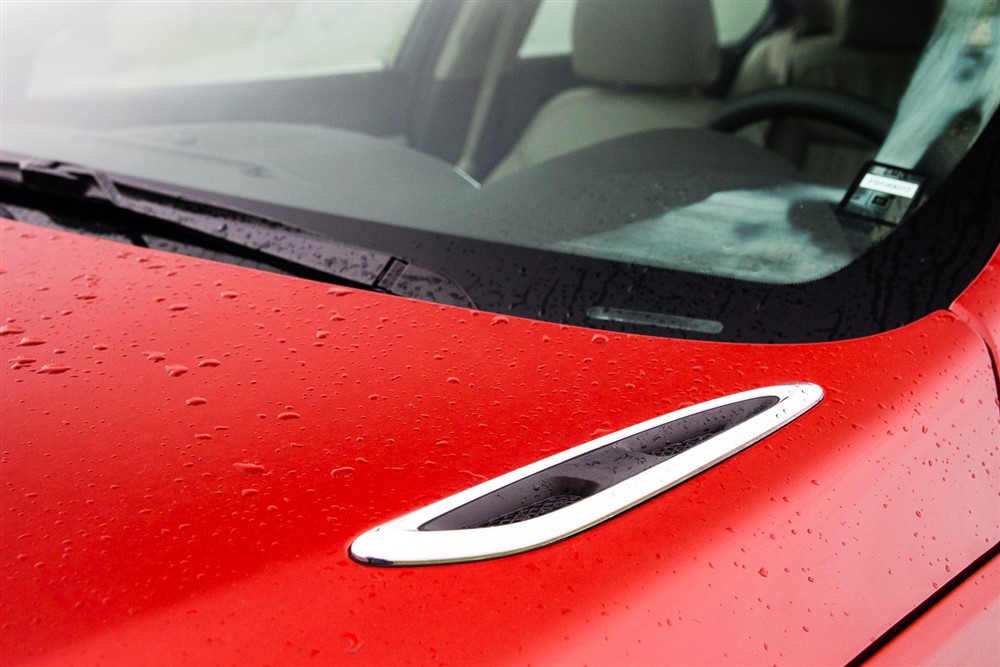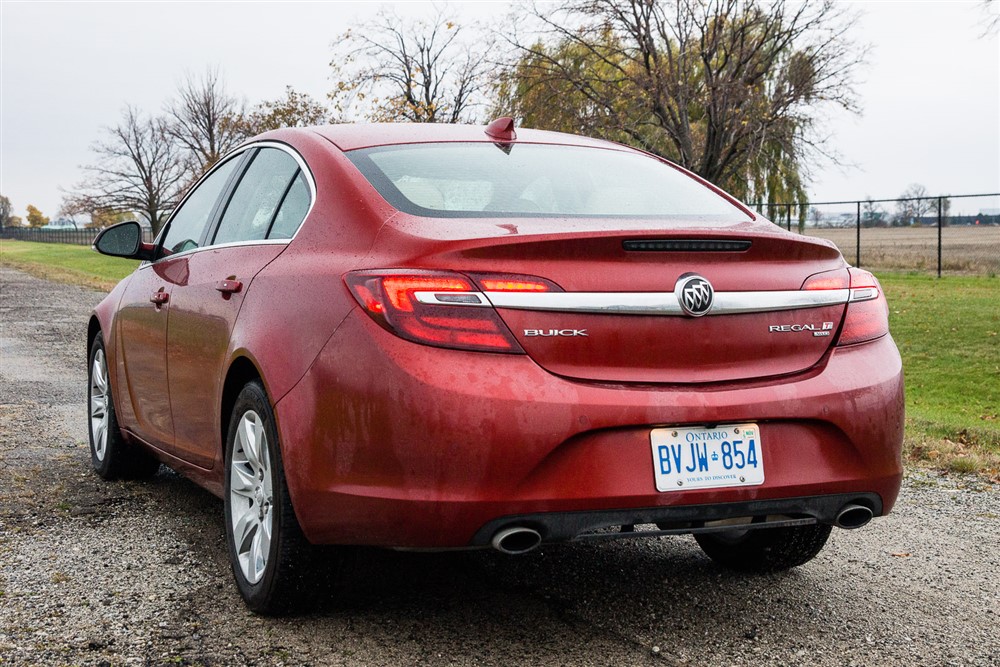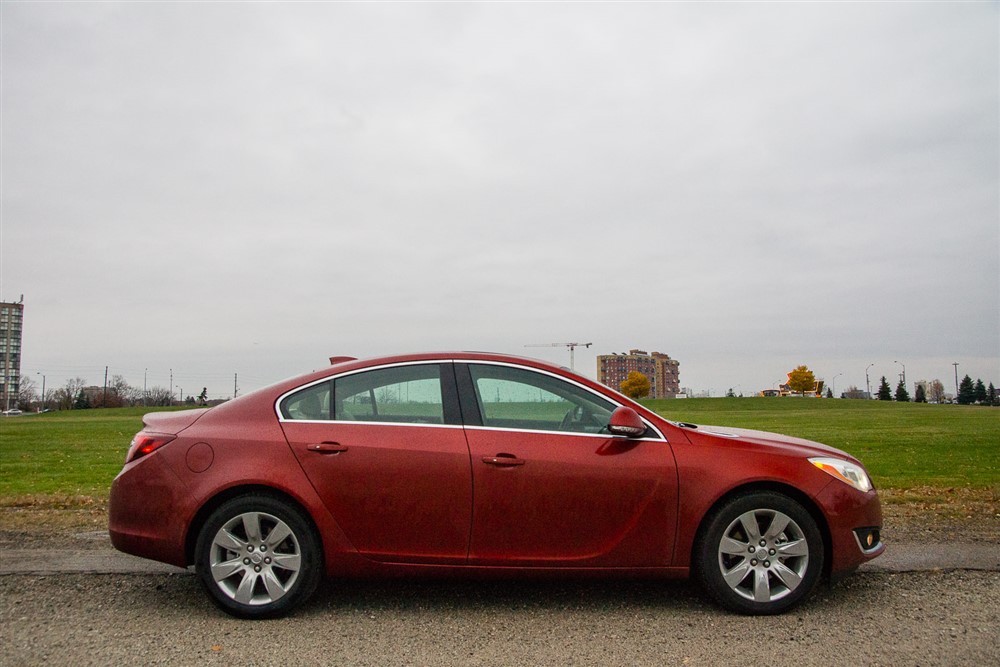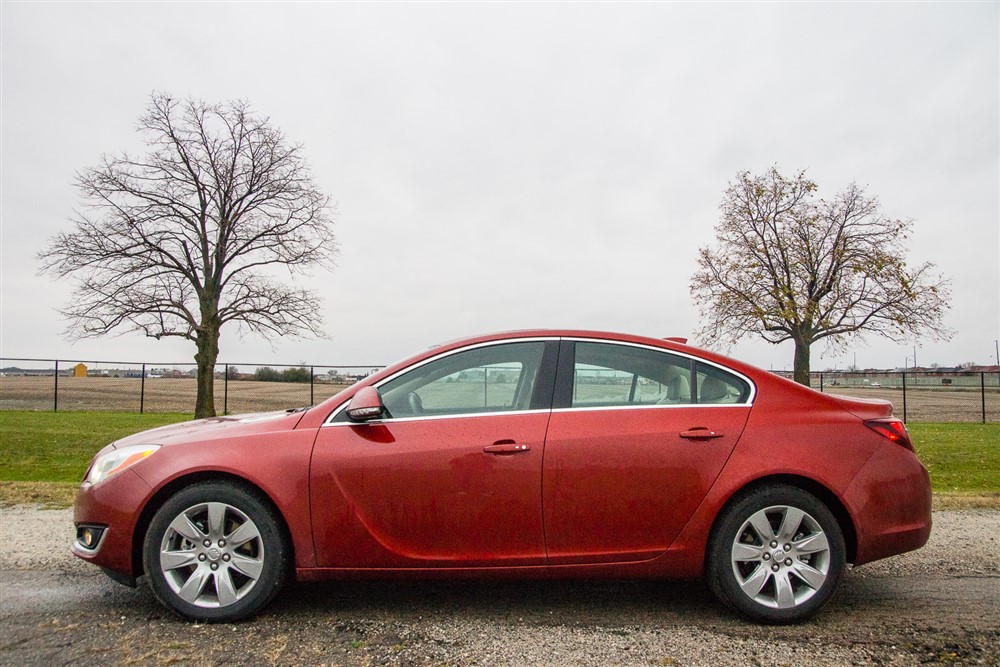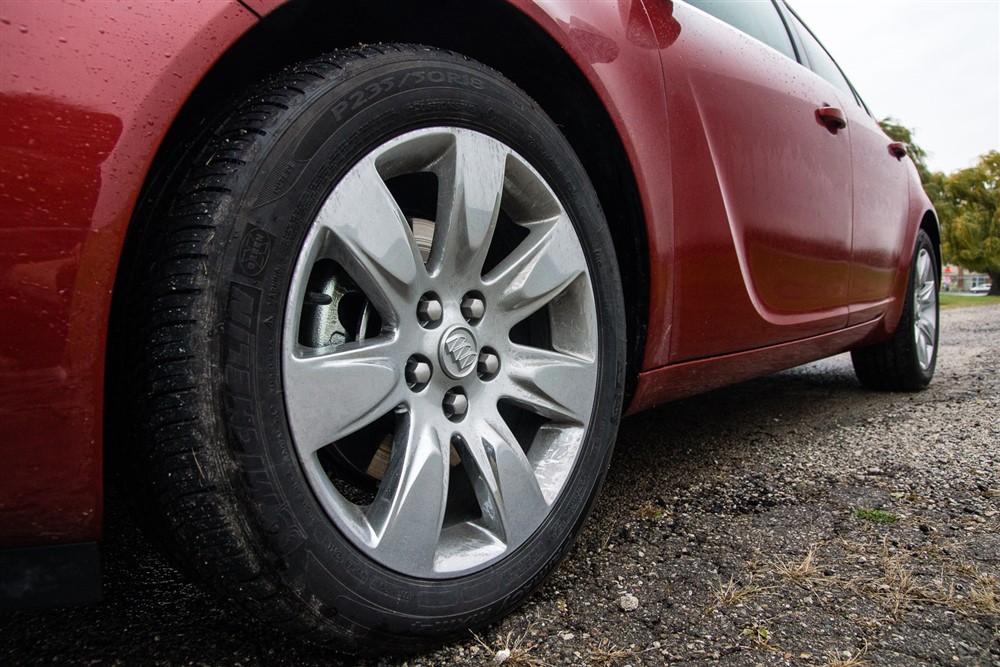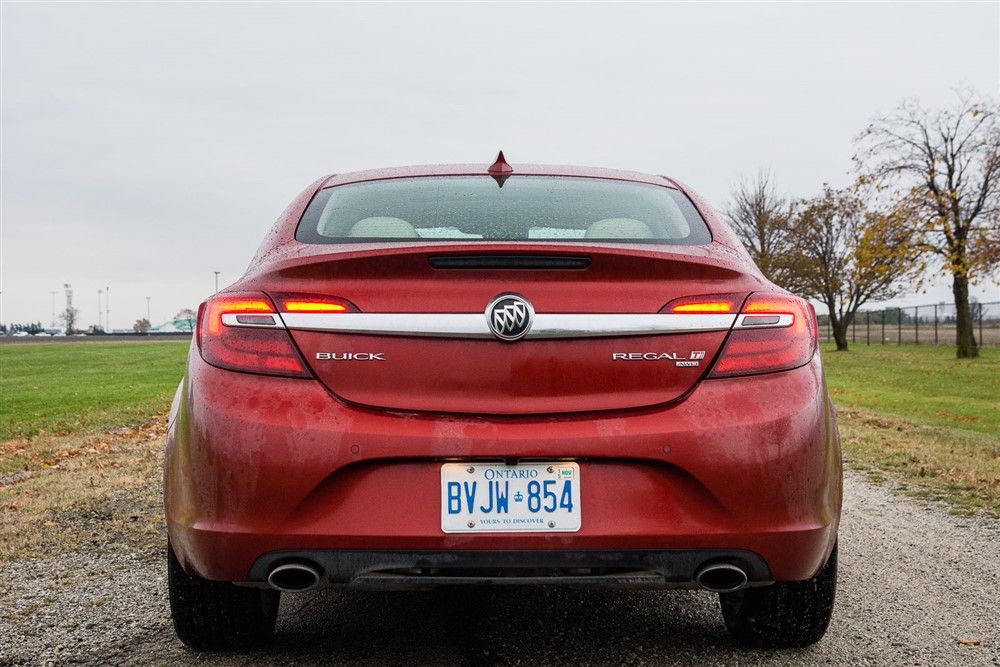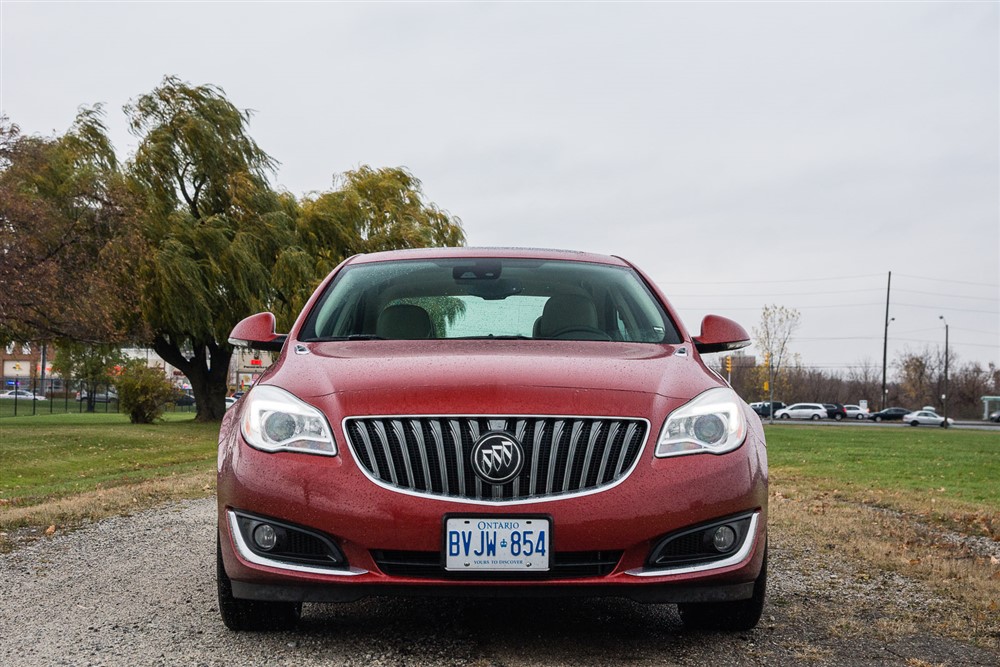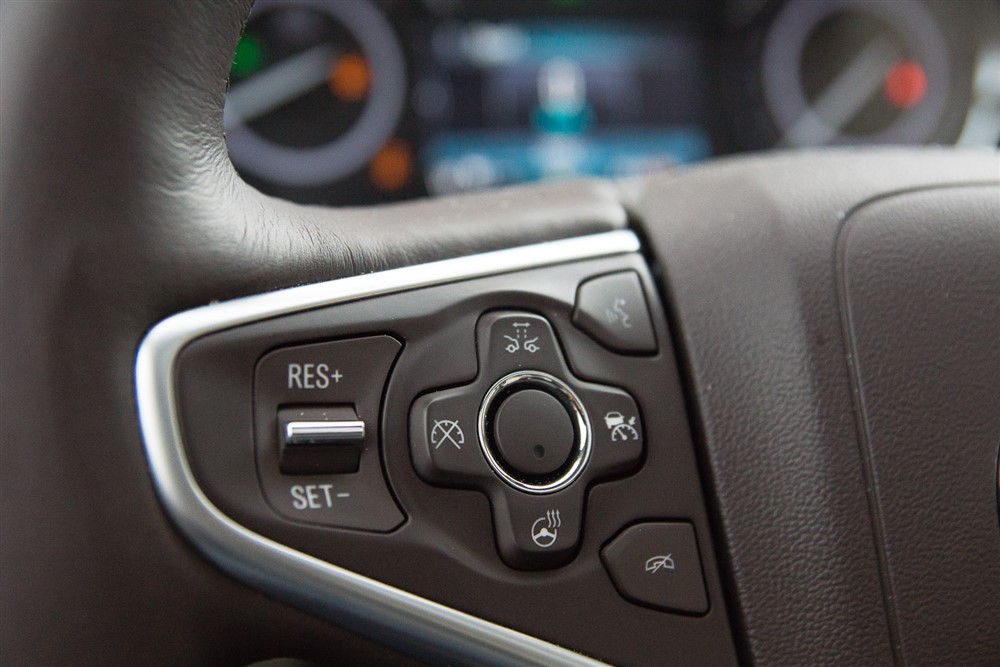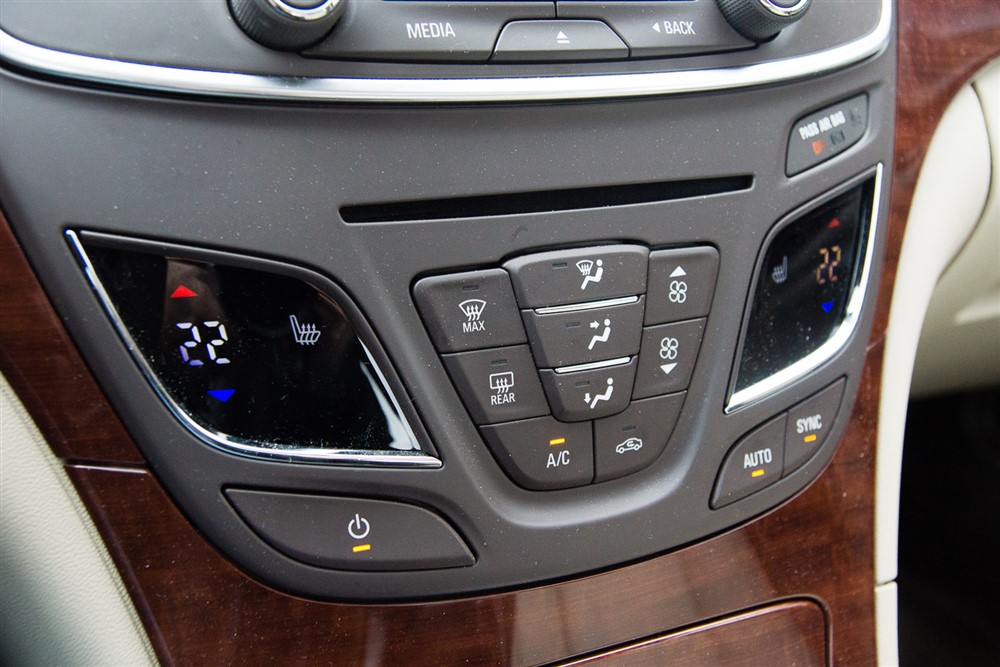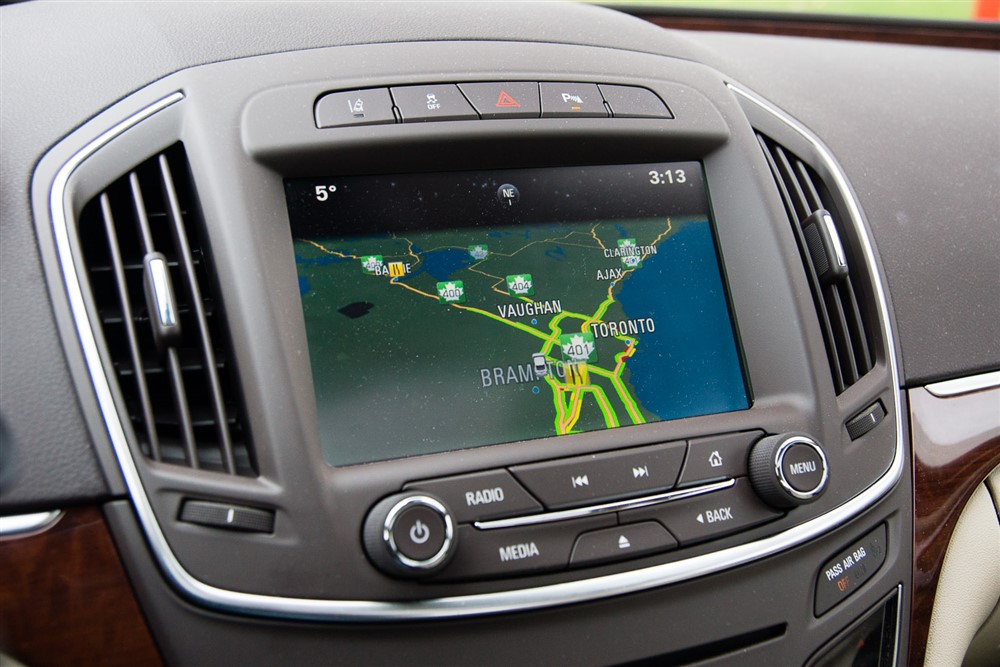Many people know Buick to be associated with retired and relaxed ladies and gentlemen, usually of advanced age. It’s a stereotype that can sometimes prove to be true, but can also be unfair and incorrect at other times. Buick has survived the cutbacks and closures that affected GM just a few years ago (rest in peace, Pontiac), but they have aimed to set a different course as the entire corporate family seeks to rid itself of the “old GM” way of thinking.
The Buick Regal was a car that wore many hats from its inception in the early 1970’s. The heydays of the large American luxury barge saw the Regal play the role of Buick’s “personal luxury coupe”. Rear-wheel drive, available V8 power, and a general indifference to fuel efficiency layered over top of an all-American veneer of affordable luxury and comfort. As time went on, the Regal became smaller to re-position it within the Buick lineup. Personal luxury was still the objective, but more efficient design and engineering led the Regal away from the big boat it originally was. There were a few outliers (the Grand National and related GNX were probably the most interesting), but the Regal would eventually evolve into a slightly forgettable, front-drive, V6-powered comfort machine.
During and after the lull that would turn into the North American financial crisis of 2008, a re-invented and re-structured GM announced they would be the European Opel Insignia to this side of the Atlantic, as the new Buick Regal. A slightly smaller, but still firmly mid-size four-door sedan, the new Regal is a handsome European-styled machine, free from the excess that many have come to associate the old Buick with. I picked up the key to a 2015 Buick Regal Turbo, with the “Premium II” package, all-wheel drive, and painted in a Copper Red Metallic.
From the chrome waterfall front grille to the “VentiPorts” on the hood (two of them, in this case – purely cosmetic), the Regal integrates into the Buick family with common familial styling cues. Seen in many other mid-size sedans of 2014, the fastback roofline is often thought to cut into rear headroom (see the Chrysler 200 and Ford Fusion), but it’s really not too bad in the Regal. With the driver’s seat adjusted for me, I can sit behind myself without restriction. The side profile of the Regal also features a prominent “scallop” character line running down the front driver and passenger doors towards the rear. High-intensity bi-xenon low-beam headlamps are standard, as well as a set of attractive LED daytime running lamps, integrated into the headlamp housings. The Regal rides on 18” chromed alloy wheels, wrapped with 235-section tires. These wheels were not my favourite item – the design is fairly anonymous compared to the wheels you see on the uplevel Regal GS, or from the folks across the hall at Cadillac.
Inside, the Regal plays up its near-luxury aspirations with a very strong feature set. Leather seating surfaces (heated for front occupants), standard satellite navigation, power everything, premium Bose audio, reverse camera, remote start, and good fit & finish give consumers more than what you’d typically find in a mid-size family sedan. Right in-front of the driver is the corporate GM (heated, standard feature) steering wheel, and incorporates the controls for the optional adaptive radar cruise control system. The instrument cluster features a configurable LCD screen, which can show speed, fuel efficiency statistics, and coolant temperature, among other things. The centre console is pretty standard fare, with a good number of physical buttons, so you don’t have to dig into the touchscreen for everything. In terms of ergonomics, not all is perfect – the single panel used to control the climate control temperature and heated seats are touch-only with no haptic feedback.
The Buick Regal has often been made available with forced induction throughout its existence. The late-1990s and early-2000s saw supercharging deliver big low-RPM torque for great off-the-line performance. The 2015 Regal goes back to turbos, but in quite a different manner. Under the hood is your choice of two four-cylinder engines: a naturally-aspirated 2.4L gasoline (with mild-hybrid electric assist) four-cylinder in the base models, and a turbocharged 2.0L gasoline four-cylinder engine in my test car. Featuring direct injection, it produces 259hp at 5300rpm, and 295 lb-ft of torque. Those who have followed the current fifth-generation Regal through its lifecycle will know that it now receives the same power plant as the more exciting Regal GS. This updated engine improves fuel efficiency, durability, and refinement, but takes away one of the trump cards that the faster Regal GS used to have for a few years. All-wheel drive models are only available with GM’s six-speed automatic transmission.
The all-wheel drive system, provided by Haldex, is a smart and quick-acting system. Sending most of the available horsepower to the front wheels under most conditions, the trick electronic brains can send up to 90% of power to the rear axle, where an electronically-controlled limited slip differential in the rear can dole out power to the side with the most traction. Torque steer isn’t a problem (GM’s new Hi-Per front strut design helps here). The six-speed transmission does a pretty good job smoothing out the power delivery – turbo lag isn’t much of an issue with the Regal in the real world. Torque delivery is strong in the middle of the rev range, and as such, acceleration is adequate and drama-free. For most, this is more than enough.
Buick rates the Regal Turbo AWD at 12.4L/100km in the city and 8.7L/100km on the highway. In mostly city driving on a rainy week, I managed 11.8L/100km. These numbers aren’t class leading considering the power output. The Regal is a fairly weighty car – 3700lbs – which probably contributes somewhat to the slightly higher consumption. The Cadillac ATS, when equipped with a similar 2.0T engine, six-speed automatic, and all-wheel drive, manages to do better. Luckily, GM says you can get away with regular gas. Premium fuel is only “recommended, but not required”. The fuel tank will accept 68L.
As mentioned earlier, the Regal does a good job delivering many premium features as standard. The standard price for the Regal Turbo Premium II before options is $39,645. The only options selected are the glass sunroof ($1,395), chromed 18” wheels ($1,050), and the technology packages. Split into two, the first package ($1,565) gives you side blind spot monitoring, lane departure warning, forward collision alert, and memory seats. The second package ($1370) builds on the first, giving you adaptive cruise control. This brings the subtotal to $45,125. For those looking for this kind of feature set, the Regal is a decent value. I would personally skip the alternate 18” wheel choice – and pocket the savings. Competitors like the Lexus ES350 aren’t available with all-wheel drive or some of the Regal’s high-tech toys, and the Volvo S60 AWD eclipses the $50,000 mark once you add in all the comparable options.
The Buick Regal represents an interesting offering in Buick lineup. It is based on a platform that isn’t seen anywhere else in GM’s North American portfolio. Largely gone are the days of blatant badge engineering (the same car living under three sub-brands). The Regal brings legitimate style, flair, and simply put, a European way of building a premium-feeling car, minus the prestigious German badge. Instead of picking up the sixth silver or white base-model BMW 3-Series or Mercedes-Benz C-Class in your neighbourhood, the Buick Regal allows prospective customers to be a little different, while hitting it big with comfort, standard features and technology. Buick boasts that many new Regal customers don’t quite fit the old-school Buick owner stereotypes – I bet they’re happy with that.

